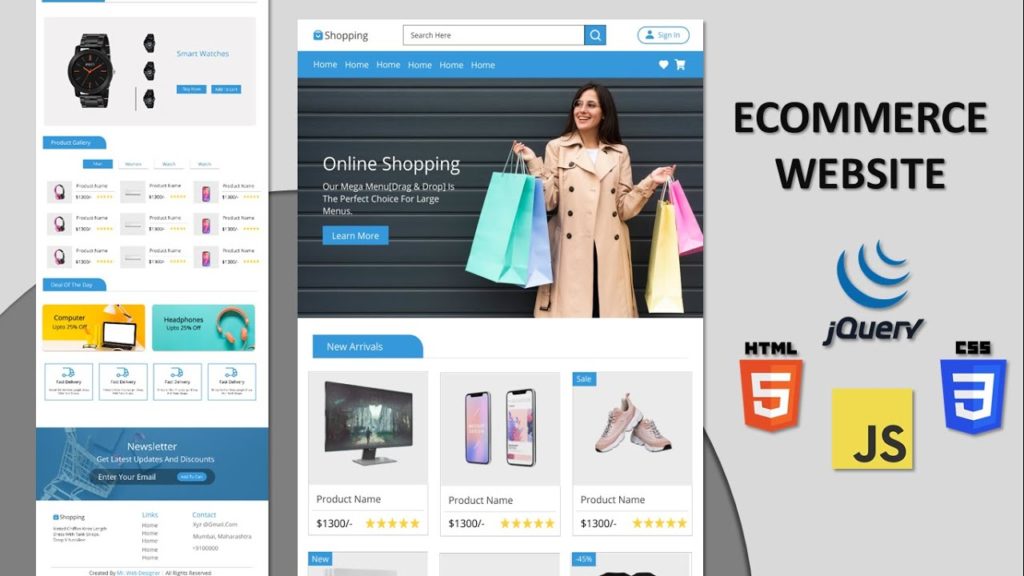Color is one of the most important elements of web design, especially for ecommerce websites.
The right color can attract attention, convey emotions, influence buying decisions, and create a memorable brand identity.
But how do you pick the best color for your ecommerce website?
In this blog post, we will share some tips and best practices on how to choose the perfect color scheme for your online store.
You will also learn how to work with an ecommerce web designer to create a stunning and effective website.
What is Color Psychology?
Color psychology is the study of how colors affect human behavior and emotions.
Different colors can evoke different feelings and associations in people, depending on their culture, context, and personal experience.
For example, red is often associated with speed, energy, passion, and danger, while blue is often associated with calmness, trust, reliability, and professionalism.
Color psychology can help you choose the right color for your ecommerce website by helping you understand what message you want to communicate to your customers and what emotions you want to trigger in them.
For example, if you want to create a sense of urgency and excitement in your customers, you might use red as your main color.
If you want to create a sense of trust and security in your customers, you might use blue as your main color.
However, color psychology is not a one-size-fits-all solution.
You also need to consider other factors, such as your industry, your products, your target demographic, and your brand personality.
What are Industry Trends?
Industry trends are the common practices and preferences of other ecommerce websites in your niche or category.
By looking at what colors other successful ecommerce websites use, you can get an idea of what works well for your industry and what customers expect from your type of products or services.
For example, if you sell health or wellness products, you might notice that many ecommerce websites use green as their main color.
Green is often associated with nature, health, freshness, and sustainability.
By using green as your main color, you can align yourself with these values and create a positive impression on your customers.
However, industry trends are not a rule that you have to follow blindly.
You also need to consider other factors, such as your brand identity, your unique selling proposition (USP), and your competitive advantage.
What are Customer Preferences?
Customer preferences are the personal tastes and opinions of your target audience.
By knowing what colors your customers like or dislike, you can create a color scheme that appeals to them and makes them more likely to buy from you.
To find out what colors your customers prefer, you can use various methods, such as surveys, feedback forms, analytics tools, or A/B testing.
You can also look at the demographics of your customers, such as their age, gender, location, income level, or education level.
Different demographics may have different preferences for colors. For example, younger customers may prefer brighter and more vibrant colors than older customers.
However, customer preferences are not a guarantee that they will buy from you.
You also need to consider other factors, such as the quality of your products or services, the value proposition of your offer, and the user experience of your website.
How to Use Color Usage Patterns?
Color usage patterns are the ways that you apply colors to different elements of your website design, such as the background, the text, the buttons, the images, or the icons. By using color usage patterns effectively, you can create contrast, hierarchy, balance, and harmony in your website design.
You can also guide the attention of your customers to the most important parts of your website, such as the headlines, the product images, or the call-to-action buttons.
There are different types of color usage patterns that you can use for your ecommerce website, such as monochromatic, analogous, complementary, triadic, or tetradic.
Each type has its own advantages and disadvantages, depending on the mood, the message, and the goal of your website.
How to Consider User Experience?
User experience is the overall impression and satisfaction that your customers have when they interact with your ecommerce website.
It includes aspects such as the usability, the functionality, the accessibility, and the aesthetics of your website.
By considering user experience when choosing colors for your ecommerce website, you can create a website that is easy to use, enjoyable to browse, and appealing to buy from.
To consider user experience when choosing colors for your ecommerce website, you need to follow some best practices, such as:
- Use colors that are consistent with your brand identity and industry trends. This will help you create a professional and trustworthy image for your ecommerce website and make it easier for your customers to recognize and remember you.
- Use colors that are appropriate for your products and services. This will help you create a relevant and meaningful connection with your customers and make them more interested and motivated to buy from you.
- Use colors that are suitable for your target audience. This will help you create a personalized and engaging experience for your customers and make them more comfortable and satisfied with your ecommerce website.
- Use colors that are compatible with different devices and browsers. This will help you create a responsive and accessible experience for your customers and make sure that they can view and use your ecommerce website without any problems or errors.



